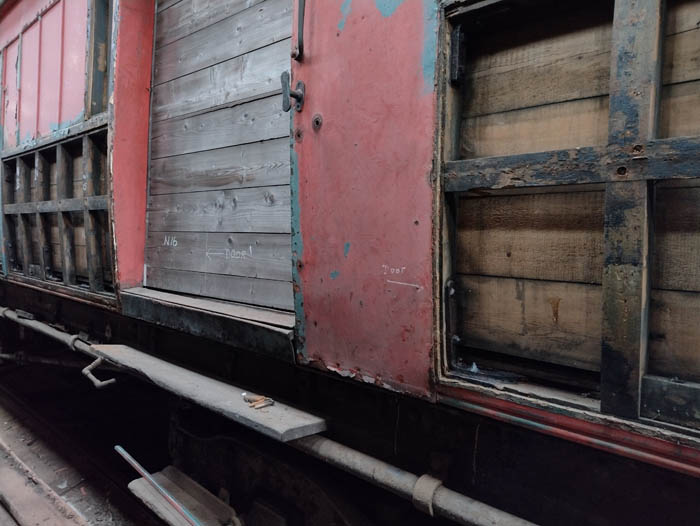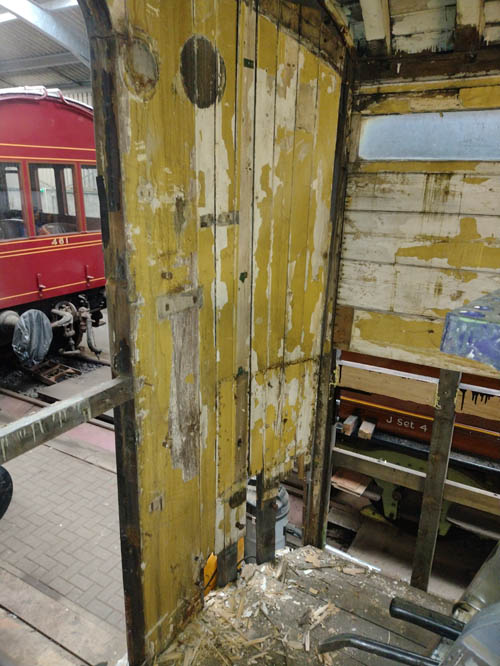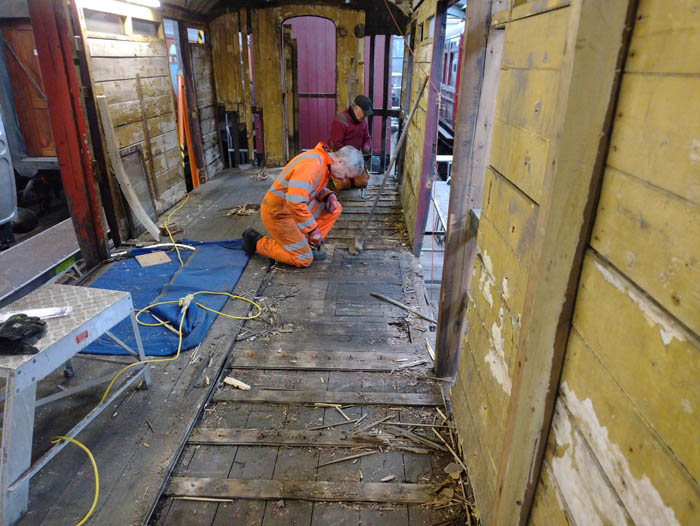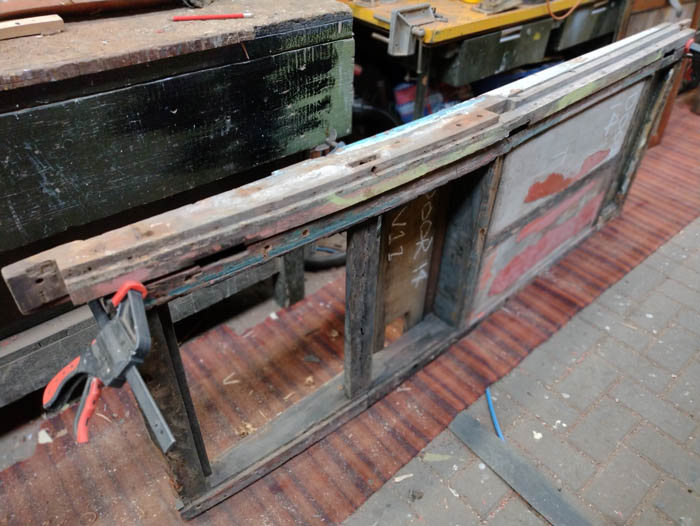
In order to facilitate a slightly easier job of lifting the body off the chassis, all the exterior doors were removed. This proved a major challenge in the cargo area as the doors had been screwed and bolted shut using, of course, steel screws into teak, a recipe for never getting the rusted screws out.

The centre cargo doors had been altered in position by BR and also converted to sliding doors. The drawings of diagram 38 show the door where marked in chalk. The knee iron with the curved floor section (see above) reinforces this conclusion.

At the west end, the interior BR fitted tongue and groove boards were fitted on top of the BR fitted second floor - presumably the second floor was added to cope with the heavy weights which might be carried when the carriage was used with the breakdown train. After removal of the BR boards, the positions of various guard's paraphenalia including the vacuum gauge can clearly be seen.

Then the BR floor had to be lifted for two reasons: firstly it would reduce the overall weight and secondly, the guards inward opening doors would not clear the (higher) floor. Photo shows Graeme and John hard at work lifting the BR boards then removing the hundreds of steel scews and nails used by BR to fix down the boards.

A Gresley pattern teak side frame was found recovered from a previous project, and was found to be a prefect profile match for the compartment end door openings, but it is 2 pillars we need for the re-positiioned cargo door openings. Of course, the profile is different as you can see from the photo above - the frame is clamped to a cargo door and the difference in profile is very noticeable. A handheld power plane was used to shave off the excess material so the outer profiles matched, then a hand router was used to re-form the 3/8" rebate in the lower part of the frame for the side teak panels.